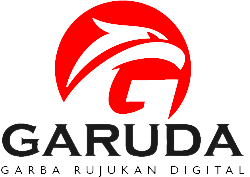DISAIN MONITORING DAN PENGENDALI BEBAN PADA PANEL LISTRIK BERBASIS IOT MENGGUNAKAN WEB SERVER
Abstract
Keywords
Full Text:
PDFReferences
P. Sebagai, L. Hybrid, D. Riyanto, M. Muhsin, and J. S. Habiby, “Penerapan PLTS 200 WP Pada Rumah Hunian Masyarakat,” Seminar Nasional Fortei Regional, vol. 7.
T. M. Putri, R. Roro, H. Peni, and A. Tjahyaningtijas, “Pemodelan Pembangkit Listrik Tenaga Surya Off-Grid untuk Skala Rumah Tangga.”
M. F. Pela and R. Pramudita, “SISTEM MONITORING PENGGUNAAN DAYA LISTRIK BERBASIS INTERNET OF THINGS PADA RUMAH DENGAN MENGGUNAKAN APLIKASI BLYNK,” Infotech: Journal of Technology Information, vol. 7, no. 1, pp. 47–54, Jun. 2021, doi: 10.37365/jti.v7i1.106.
K. Hamamni, M. Mukhsim, and D. Siswanto, “Prototipe Sistem Monitoring Biaya Penggunaan Listrik Pada Rumah Kos Berbasis IoT,” JASEE Journal of Application and Science on Electrical Engineering, vol. 1, no. 02, pp. 35–46, Feb. 2021, doi: 10.31328/jasee.v1i02.12.
Moh. R. Imawan, Y. A. Suryo, and D. Irawan, “Rancang Bangun Pencatatan Data Pembangkit Listrik Tenaga Surya Hybrid Berbasis IoT (Internet of Things),” Jurnal Teknik Elektro dan Komputasi (ELKOM), vol. 5, no. 2, pp. 162–172, Aug. 2023, doi: 10.32528/elkom.v5i2.19307.
R. Risfendra, G. F. Ananda, and A. Stephanus, “Internet of Things on Electrical Energy Monitoring Using Multi-Electrical Parameter Sensors,” MOTIVECTION : Journal of Mechanical, Electrical and Industrial Engineering, vol. 3, no. 1, pp. 1–10, Jan. 2021, doi: 10.46574/motivection.v3i1.79.
I. S. Hudan and T. Rijianto, “Rancang Bangun Sistem Monitoring Daya Listrik Pada Kamar Kos Berbasis Internet of Things RANCANG BANGUN SISTEM MONITORING DAYA LISTRIK PADA KAMAR KOS BERBASIS INTERNET OF THINGS (IOT).” [Online]. Available: https://www.sparkfun.com/datasheets
M. Hayaty and A. R. Mutmainah, “IoT-Based electricity usage monitoring and controlling system using Wemos and Blynk application,” Jurnal Teknologi dan Sistem Komputer, vol. 7, no. 4, pp. 161–165, Oct. 2019, doi: 10.14710/jtsiskom.7.4.2019.161-165.
Lulu Sabillah and R. Hidayat, “Sistem Monitoring Pemakaian Energi Listrik Pada Kamar Kost Menggunakan Aplikasi Blynk Berbasis Internet of Things,” Jurnal Komputer dan Elektro Sains, vol. 1, no. 2, pp. 25–29, Aug. 2023, doi: 10.58291/komets.v1i2.104.
A. B. Lasera and I. H. Wahyudi, “Pengembangan Prototipe Sistem Pengontrolan Daya Listrik berbasis IoT ESP32 pada Smart Home System,” Elinvo (Electronics, Informatics, and Vocational Education), vol. 5, no. 2, pp. 112–120, Dec. 2020, doi: 10.21831/elinvo.v5i2.34261.
I. Made et al., “RANCANG BANGUN SISTEM MONITORING PANEL LISTRIK DAN KONTROL LISTRIK KOS BERBASIS IOT,” vol. 2, no. 1, 2022, [Online]. Available: https://ejournal.catuspata.com/index.php/jkdn/index
M. M. F. Fatori, “Aplikasi IoT Pada Sistem Kontrol dan Monitoring Tanaman Hidroponik,” Jurnal Pendidikan Sains dan Komputer, vol. 2, no. 02, pp. 350–356, Oct. 2022, doi: 10.47709/jpsk.v2i02.1746.
Anggy Giri Prawiyogi and Aang Solahudin Anwar, “Perkembangan Internet of Things (IoT) pada Sektor Energi : Sistematik Literatur Review,” Jurnal MENTARI: Manajemen, Pendidikan dan Teknologi Informasi, vol. 1, no. 2, pp. 187–197, Jan. 2023, doi: 10.34306/mentari.v1i2.254.
L. Aditya and R. Prasetyo Adi, “Rancang Bangun Pembangkit Listrik Tenaga Picohydro Untuk Sistem Penerangan Jalan Umum 50Watt Berbasis Bluetooth HC-05,” 2024.
D. Hercog, T. Lerher, M. Truntič, and O. Težak, “Design and Implementation of ESP32-Based IoT Devices,” Sensors, vol. 23, no. 15, Aug. 2023, doi: 10.3390/s23156739.
M. Faisal Majid, N. Nadhiroh, T. Otomasi Listrik Industri, J. Teknik Elektro, and J. D. GA Siwabessy, “Pengujian Kinerja Sensor PZEM-004 & PZEM-017 Pada Sistem PLTS,” 2024.
O. : Fauzie, A. Muharam, D. Notosudjono, and A. R. Machdi, “PERANCANGAN PROTOTYPE SISTEM KONTROL DAN MONITORING PERALATAN LISTRIK PADA RUMAH TANGGA MENGGUNAKAN SENSOR PZEM-004T BERBASIS INTERNET OF THINGS (IOT).”
A. Juwito, D. Diono, and M. Jihad, “Design a Prototype Monitoring System and Data Logging for 3-Phase Electrical Systems,” European Alliance for Innovation n.o., Jul. 2023. doi: 10.4108/eai.5-10-2022.2327860.
R. B. S. Bayu, R. P. Astutik, and D. Irawan, “RANCANG BANGUN SMARTHOME BERBASIS QR CODE DENGAN MIKROKONTROLLER MODULE ESP32,” JASEE Journal of Application and Science on Electrical Engineering, vol. 2, no. 01, pp. 47–60, Apr. 2021, doi: 10.31328/jasee.v2i01.60.
DOI: https://doi.org/10.52447/jkte.v10i1.8089
Refbacks
- There are currently no refbacks.








